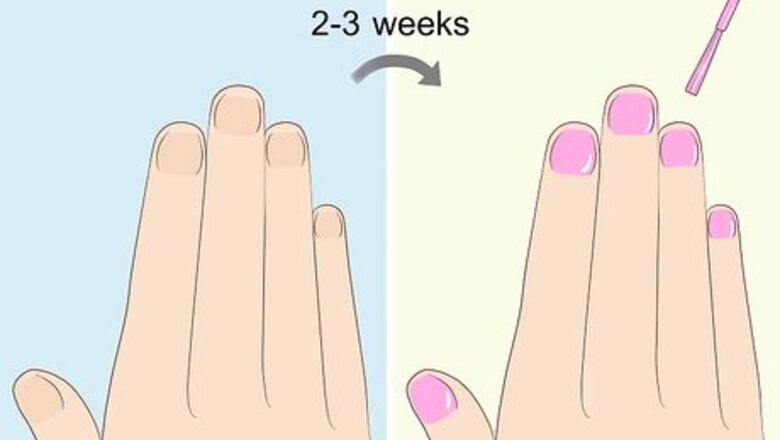
views
- Avoid painting your nails for 2 to 3 weeks to help them heal and become stronger on their own.
- Help your nails heal faster after damage or getting acrylics removed by moisturizing them with an oil or serum daily.
- Keep in mind that it can take between 4 and 6 months for your nails to heal completely.
Healing & Building Healthier Nails
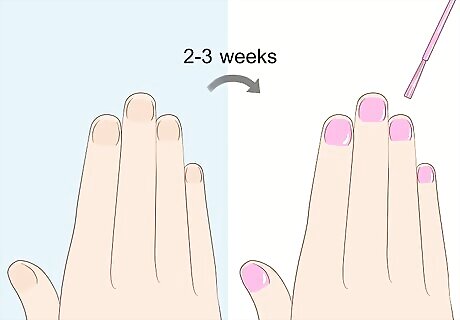
Give your nails a 2 to 3 week break between nail polish applications. Dermatologists recommend minimizing the use of nail polish if you want to build healthier nails, as chronic chemical exposure can dry your nails out over time. To start healing your nails, remove your polish and wait 2 to 3 weeks before reapplying it. Watch to see if your nails improve. Small, white patches on your nails indicate a keratin build-up, which can be treated by giving your nails a polish break. Use an acetone-free nail polish remover to help preserve the integrity of your natural nails. When you repaint your nails, go with a polish fortified with vitamin A and other nutrients.
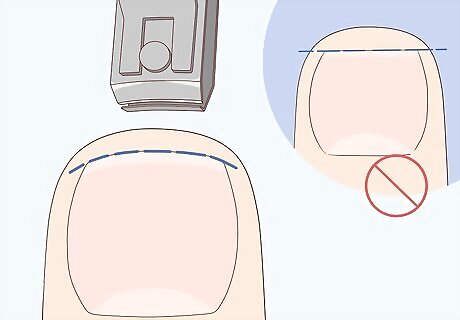
Clip and file your nails down short. It may seem counterintuitive, but trimming your nails can help them grow and become stronger. Use a small pair of nail clippers to shorten your nails. Make sure you cut them to match the natural arch of your nail, not straight across. Then, file your nails with a nail file using a gentle horizontal motion. Go slowly and apply even pressure until the nails begin to shorten. Repeat every few days to keep your nails just above the edges of your fingertips. Use the soft side of the nail file to buff the surface of your nails. This can improve blood flow while also creating a surface shine. Apply a nail cream afterward for even more shine and strength.
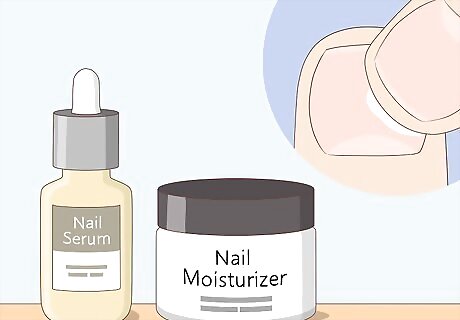
Moisturize your nails daily. Apply a nail-specific cream or serum throughout the day, especially after washing your hands. At night, rub on a generous portion of the moisturizer and put on cotton gloves or socks. The cotton will help moisturize the nails overnight by preventing air from drying them out. Washing your hands can dry nails out. To protect your skin and nails, keep a bottle of hand lotion next to every sink at home and work, and apply it whenever you wash your hands. For the best results, add cuticle cream or oil to your moisturizing routine, as healthy cuticles lead to healthy nails.
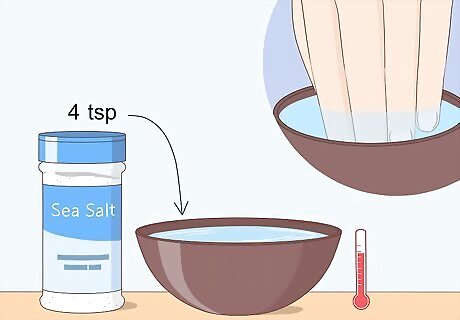
Soak your nails in salt water if it’s infected. Health care professionals often recommend those with ingrown toenails or toe fungus to soak the affected toe in salt water, and the same method can be applied to your fingernails. In a medium bowl, mix warm water and 4 tsp (23 g) of salt together. Place your nails in the solution and soak for up to 20 minutes 2 to 3 times a day. Apply a moisturizer directly to the nails afterward to promote even more healing. As an alternative, place your hands in a bowl of warm milk or olive oil.
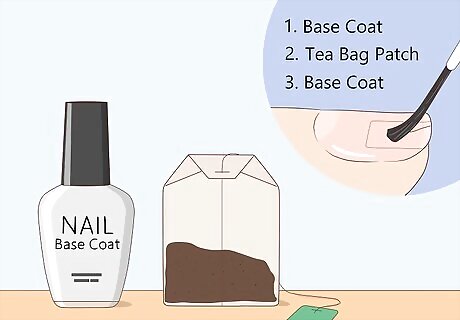
Patch broken or split nails with a tea bag. Cut out a small piece of a paper tea bag. Apply a clear base coat to the damaged nail. Place the tiny tea bag cut-out on top of the cut, split, or cracked area. Press the patch down, removing any air bubbles, and then add another coat of clear polish. Keep the tea bag patch on your nail for only a week or so at a time, removing it with nail polish remover. If needed, replace the patch with a fresh one.
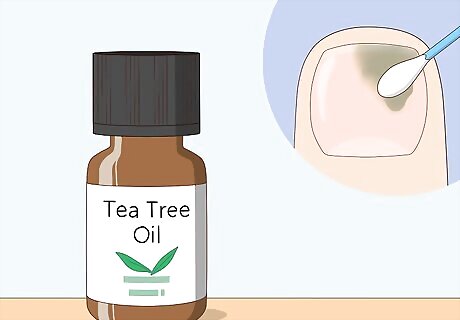
Apply tea tree oil to damaged nails to battle infection. With its anti-fungal characteristics, tea tree oil is a great option if your nails are discolored, brittle, or emitting any odor. Apply a few drops of tea tree oil to the damaged nails twice a day. Repeat until the nails begin to improve in appearance. If you’re irritated by tea tree oil, apply lemon juice with a cotton ball to your nails. The acid in the juice can help to kill off fungi. If your doctor has prescribed an antifungal, use the medicine instead of at-home remedies.
Maintaining Healthy Nails
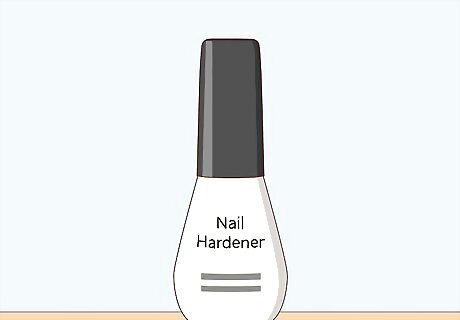
Use nail-strengthening products to improve overall nail health. Experts recommend applying a nail hardener to your nails to help strengthen them. These products come in oils and polishes and give your nail an extra layer of protection, especially if you paint or get them done often. Follow the instructions on the back of your chosen product carefully to ensure you’re using it correctly.
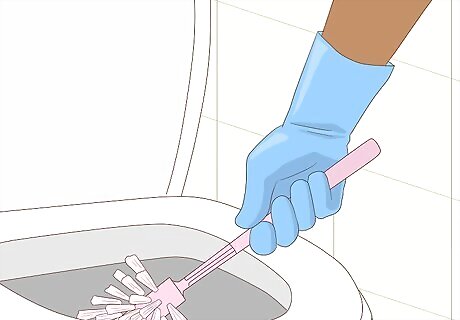
Wear gloves when working with harmful substances. When doing household chores or cleaning, put on a pair of latex or heavy plastic gloves. The corrosive elements in cleaners can eat away at your nail beds, and wearing gloves can help prevent possible damage. Even overexposure to dish soap can cause your nails to get weaker, so consider wearing gloves when you do the dishes.
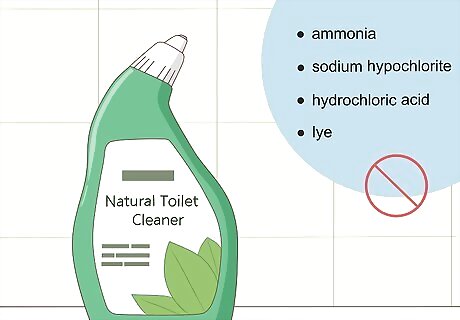
Use gentler cleaning products. The chemicals in many antibacterial sprays, furniture polishes, and cleaning wipes can irritate your skin and nails. When shopping for cleaning products, choose natural or non-irritating formulas. Avoid products with ammonia, hydrochloric acid, sodium hypochlorite, or lye.
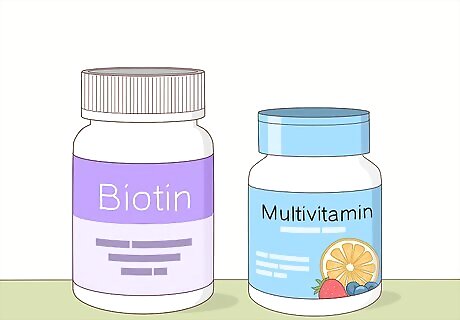
Take a biotin supplement. Dermatologists recommend taking oral biotin supplements to encourage strong and healthy nail growth. Try taking biotin vitamins daily for 4 to 6 months to see if your nails become stronger. Keep in mind that this isn’t an overnight solution.
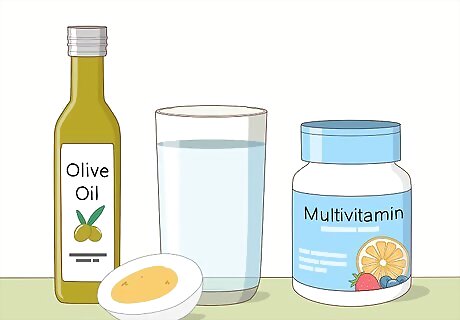
Eat food rich in vitamins A, B, C, and E, and drink lots of water. For strong and healthy nails, make sure you're consuming plenty of foods with the vitamins A, B, C, and E. These vitamins can help strengthen your nails and cuticles. Foods such as olive oil and eggs can give you these nutrients. Also, drink at least 8 glasses of water a day to prevent dehydration, brittle nail beds, and dry cuticles. Try getting more of these nail-healthy vitamins by consuming carrots, sweet potatoes, spinach, kale, milk, strawberries, broccoli, and seafood.
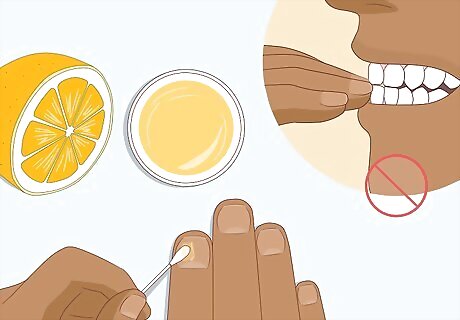
Take steps to stop picking, tearing, or biting your nails. If you bite or pick at your nails, this may be the cause of the damage. Attempt to end these behaviors by coating your nails in lemon juice or a nail-biting reducer nail polish. Nail biting can happen in your sleep. To prevent this, put socks or mittens on your hands before bed. Similarly, avoid using your nails to scratch or open things, such as stickers or tabs, as this can cause them to break and tear. If you feel your nail biting is becoming a compulsion, ask a therapist or counselor for help.
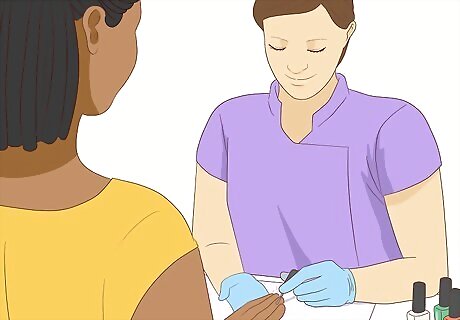
See a reputable manicurist. If your nails are damaged, it may be a good idea to go to a professional for polishing or new nail applications. Tell the technician about the problems you've been having and ask for their treatment suggestions. If offered, get a hand massage as well to increase blood flow to the area and stimulate healing.
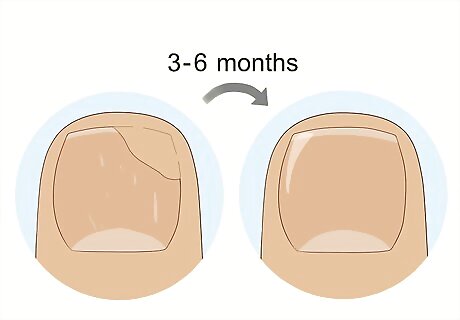
Allow 4 to 6 months for your nails to heal. Be patient—nails don’t heal miraculously overnight! It can take anywhere from 4 to 6 months for your nails to grow and heal fully. Resist the urge to speed up the process by trying aggressive treatments, as these can cause more harm than good. Instead, try the above tricks and let Mother Nature do her thing.
Treating Nail Injuries
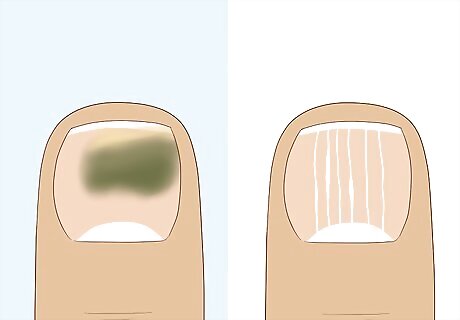
Assess the extent of potential injuries before treating your nails. Before you decide how to treat your nails, take a closer look to determine if they are damaged. Examine the nails’ shape to see if they’re distorted. Look at the coloring of the nails, as a green or yellow shade could indicate infection or nail fungus. Feel the nails’ surface to see if there are any surface bumps or ridges. Small, white patches on your nail may be from a keratin build-up or signal a nutritional deficiency of a vitamin or mineral, like zinc or magnesium. Your doctor can diagnose whether it’s a deficiency or not by doing some bloodwork.
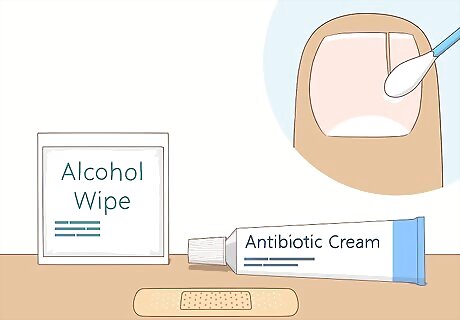
Treat your nail if it's cut or open. If your nail has an open wound or cut, wash the area carefully under water with soap. Sanitize the area with an alcohol wipe. Then, apply some antibiotic cream or gel to the nail bed. If the cut is large, cover it with a band-aid. If the injury is minor, let it air out and keep it clean.
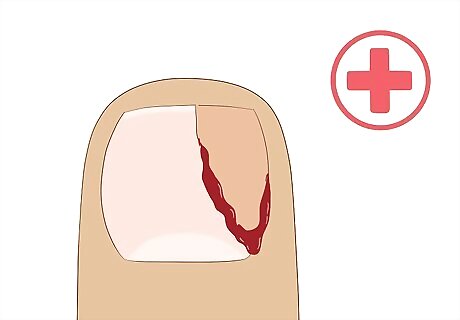
Seek medical help if you have an injury or open wound. If your nails are damaged due to a blunt injury or a large part of your nail is separated from the skin, get medical attention. A doctor can run tests (such as X-rays), treat immediate injuries, and provide adequate treatment so you don’t get an infection or risk injuring your nail more.
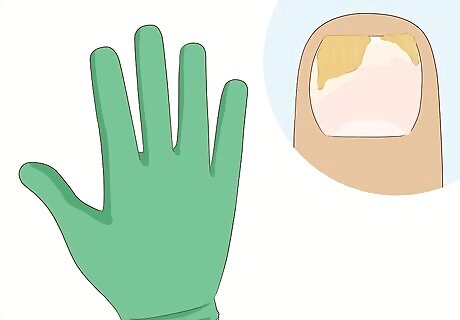
Avoid spreading fungal infections by keeping your hands clean. If you’ve been diagnosed with a fungal infection, take steps to make sure it doesn’t spread. Fungal infections can spread from your fingernails to your toenails, your eyes, and to other people, so take these precautions to keep yourself and others safe: Wear gloves to prevent contaminating others. Avoid cooking or serving food to other people during this time. Keep your hands clean, and treat any broken skin around the nail. Apply anti-fungal cream as directed by your doctor.












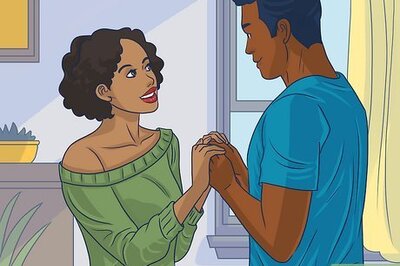




Comments
0 comment